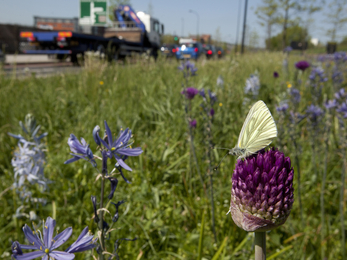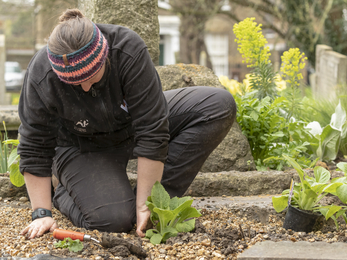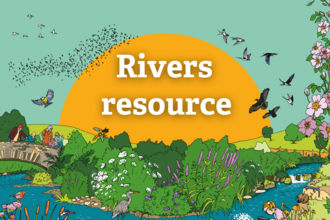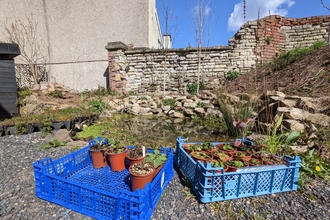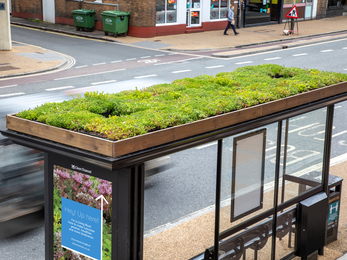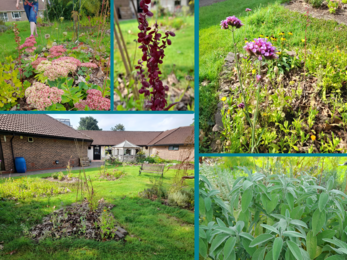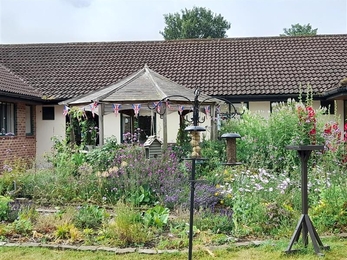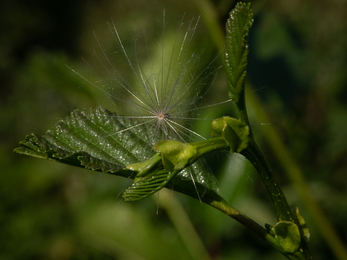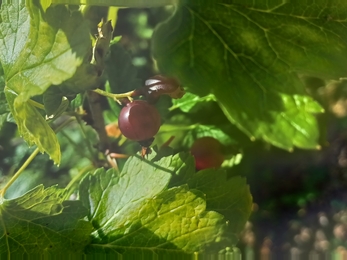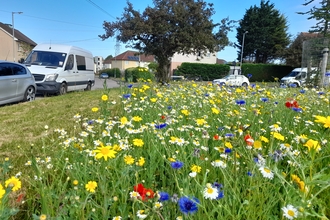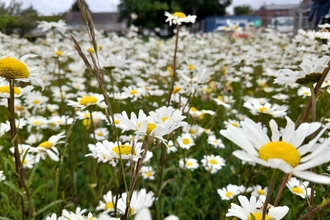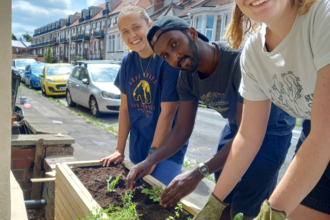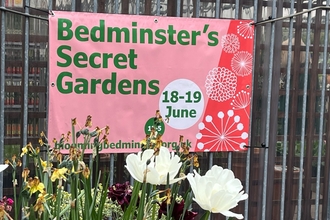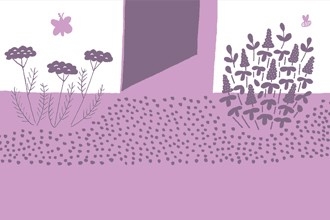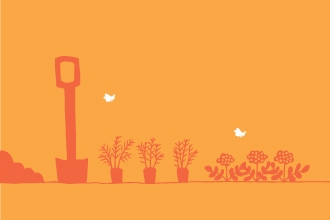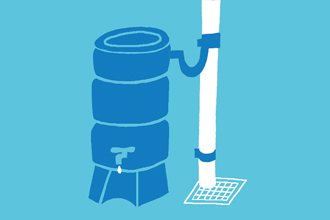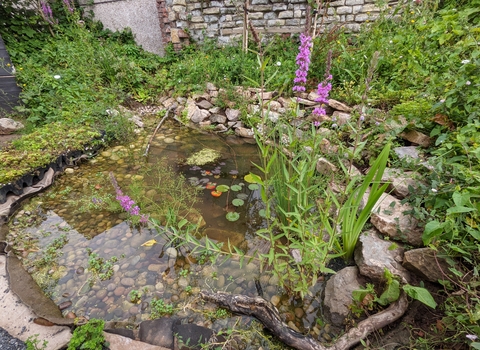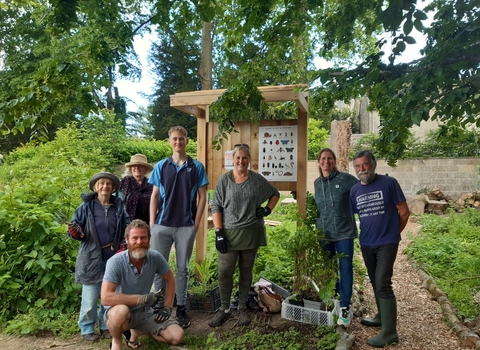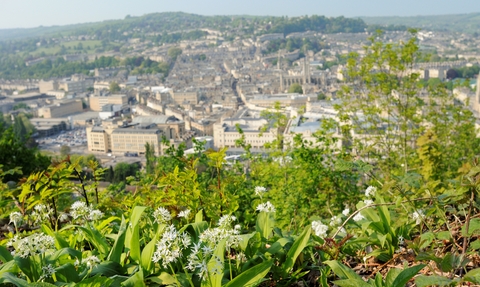
Nick Upton/2020VISION
Climate Resilience
What is Climate Resilience?
The effects of climate change are visible all around us. More extreme weather poses a threat to nature and to people and becoming more climate resilient is key for us as individuals and for our landscapes.
Climate resilience is our ability to adapt to the changing climate. To understand the risks that are applicable to us and take action as individuals and as communities to help reduce the damage that climate change will bring.
Depending on where you live, the actions you might take to become more climate resilient will be different. For example, if you live in low-lying North Somerset, you may want to take action to help mitigate flooding. If you live in Bristol you might look at reducing the damaging heat that can occur in built up areas.
Climate change is right here, right now. There are myths that the earth’s climate has always changed historically – which is true, but not at his rate. The effects of climate change isn’t just being felt in Greenland or the Amazon rainforest, but here in Avon it’s effecting residents, commuters, businesses, hospitals, farmers and families – everyone.
We’re experiencing changes in our weather patterns and our seasons with hotter, drier summers and warmer, wetter winters. This in turn creates more extreme weather events, such as heatwaves, droughts, flooding and storms.
Gardening for flooding
With rainfall set to increase by as much as 47%, some areas could see more frequent and more damaging flooding. Gardens in the UK cover 1,670 square miles, so actions you take in your garden can not only help to protect your home but can also have an impact on the wider community, reducing the risks of surface water flooding.
Tips for more flood resilient gardening
- Reduce hard landscaping - The more soil, flower beds and lawn you have, the more surface area there will be to absorb water.
- Plant Trees and shrubs - Large plants can help to reduce the risk of flooding by taking up water into their roots.
- Think vertical - make every surface in your garden absorb water. Place hanging pots on fences adds extra space for soil to absorb water or add climbing plants to slow the flow of water.
- Perfect ponds - Ponds are not only excellent habitat for wildlife, but they store water, too! Even a small pond can hold water. Check out our ponds resource for a step-by-step guide.
- Water management - Consider adding a water butt (or two!) if you don't have one already. They can store water during periods of heavy rain and help keep your garden watered during drier spells.
- Build a bog garden - Some plants love water, why not try building a bog garden? It will store water, provide great habitat and they look wonderful. You can find a guide below.
Richard Burkmar
Flood resilient plants
- water mint
- ragged robin
- male fern
- cuckoo flower
- flag iris
- purple loosestrife
- marsh marigold
- brooklime
- creeping jenny
Take it up a notch
If you are living in a home that floods regularly, there's even more you can do to make your garden work hard collecting rainwater. These tips require a little more effort, but might be an option for wetter gardens.
The leaky hosepipe is a technique used by large ornamental gardens to assist with watering, but it can be used on a small scale to manage water effectively. The technique involves a hosepipe with small holes throughout, it is attached to your water butt and the hosepipe is laid around the garden, providing a slow release of water and keeping your water butt low enough that it can take in excess water during heavy rainfall.
Garden design can be hugely impactful when if comes to directing water away from your home. If you're in a position where you'd like to completely redesign your garden, you may want to think about building ephemeral streams that can carry water down into your pond during heavy rainfall. More help with flood resilient gardening can be found at Floodre.
Flooding Resources
Dealing with Extreme Heat
More extreme weather doesn't just mean more rain, it also means that areas of the UK are more likely to experience heat waves. Projections predict three quarters of Wildlife Trust nature reserves will see a temperature increase of 1.5 degrees and almost half will be at extreme risk of wildfires.
But it's not just nature reserves that will feel the effects of hotter weather. More frequent droughts and higher temperatures means we will all have to change how we garden, grow vegetables and use water.
Paved over gardens and fake grass reduces water absorption and increases urban heating, especially during heatwaves. Combined with more concrete, asphalt and bricked surfaces, less greenery, tall buildings, cars, air conditioning and general industry – this means that temperatures are rising in built-up areas.
This is known as the urban heat island (UHI) effect and is particularly noticeable at night and during heatwaves. Knock-on effects include disrupted ecosystems and biodiversity, altered seasonal patterns, reduced air quality, health risks to vulnerable populations and increased energy use through air conditioning.
What does this mean for wildlife? More extreme weather puts wildlife under increased pressure as habitats can change and become unsuitable. One of the best ways to relieve that pressure is to provide more connected habitat. This is where gardens, community spaces, allotments and parks come in. They create stepping stones between nature reserves and there's more suitable habitat available.
What does this mean for people? Hot weather can be extremely dangerous for people. In cities, large areas of concrete mean little shade and reflected heat causing what's called the 'urban heat island effect' where cities are several degrees hotter than surrounding green spaces. The best way to combat this is creating as many green areas as possible.
Greener streets to cope with urban heat islands
There are actions we can take at home and nature-based solutions needed in our neighbourhoods at planning and policy-making levels. Grenville in St George, BS5 has created a greener street to combat urban heating. There are many ways to take action for nature in your front garden. By joining forces with your neighbours, even more can be achieved. Greener streets are more attractive, raise community spirit, improve the air quality, reduce flooding risk, help manage/cool the temperature and increase property value.
Grenville in St George shared how he added native wildflowers and habitat to his street in BS5:
- Green Bin covers
- Hanging baskets
- Trees – Rowan trees provide berries for birds
- Window boxes, tubs and containers
- Add climbers to walls
- Set up the Kensington Road Residents Association to promote the green agenda and encourage sustainable practices to benefit the residents and local wildlife
More climate resilient gardening ideas
Permaculture gardening
Emma from Thornbury Community Permaculture Project in South Gloucestershire, manages a garden located in a care home. Permaculture works with nature, uses natural cycles and ecosystems to form principles for long term growing and land management. These principles can be applied to small gardens, allotment plots, large community spaces and farming. Permculture is super climate resilient.
Emma shared some practices to take action against climate change locally:
- No-dig beds
- Composting
- Hedgeway creation
- Deliberate wild areas and wild edges
- Wildflower meadow
- Wildlife pond
- Intentional habitats like insect houses, bird boxes and hedgehog highways
- Their herb spiral and main plant beds was designed with drought resistant gardening in mind.
Learn more about Thornbury Community Permaculture Project
Forest gardening
There are many ideas and working examples of climate resilient gardening at Grow Wilder, like forest gardening. A forest garden is a system of multi-tiered productive crops. The layers include tree cover at the top, such as alder trees, sweet chestnut and medla trees. Trees provide shade when it's hot and cover and protection in extreme weather events, such as storms.
Then there are apple trees and fruit bushes, like currants and gooseberries to occupy different spaces. On ground level you'll find herbs and medicinal plants that can also make use of the space here. The soil is covered all year round and undisturbed.
It's good to think about food, fuel and fibre so that you're meeting the different productive avenues.
Forest gardens are water retentive. As soon as it rains, it is soaked up by all of the diversity of the trees, shrubs and ground crops. Water is locked into the soil and doesn't flood away.
Climate resilient communities
Community groups are at the heart of climate resilience. Their local knowledge, relationships, trust and physical presence and consistency of presence is vital to understand key local issues, needs and cultural differences.
Community strength is powerful and impactful.
Beyond infrastructure, these groups foster social cohesion—essential for collective response to local climate change challenges. The recent heatwaves and future flooding and extreme weather events may call for a change in plants in gardens, community spaces and school grounds.
They inspire sustainable habits, push for fair climate policies, and bring hope in challenging times. Together, communities can face climate change head-on.
Resources
The Bristol Climate Nature Partnership has been supporting community-led climate and nature action. The plans were developed by the community for the community, with engagement and learning at the heart. Avon Wildlife Trust supported Really Wild Lockleaze with a community ecologist to help drive community action and boost biodiversity. They achieved a lot!
"The Community Climate Action Project is an ambitious, citywide programme funded by the National Lottery’s Climate Action Fund. It demonstrates the important role communities can play in achieving the city’s climate and nature ambitions, whilst also improving people’s quality of life."
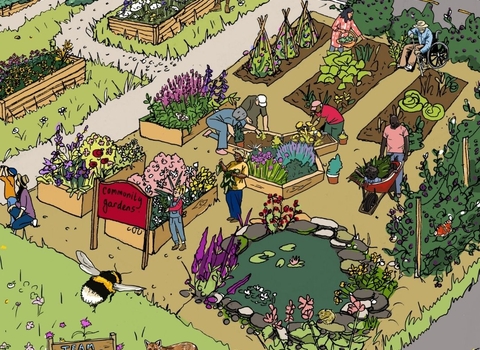
(C) Hannah Bunn
Be part of Team Wilder
All actions for nature collectively add up and creates life for people and wildlife.
Share your actions for nature to inspire and motivate others.
Talk about what you do to make these actions part of everyday life.
Share and tag us on @avonwt on social media as well.
Log your actions for nature on the map

